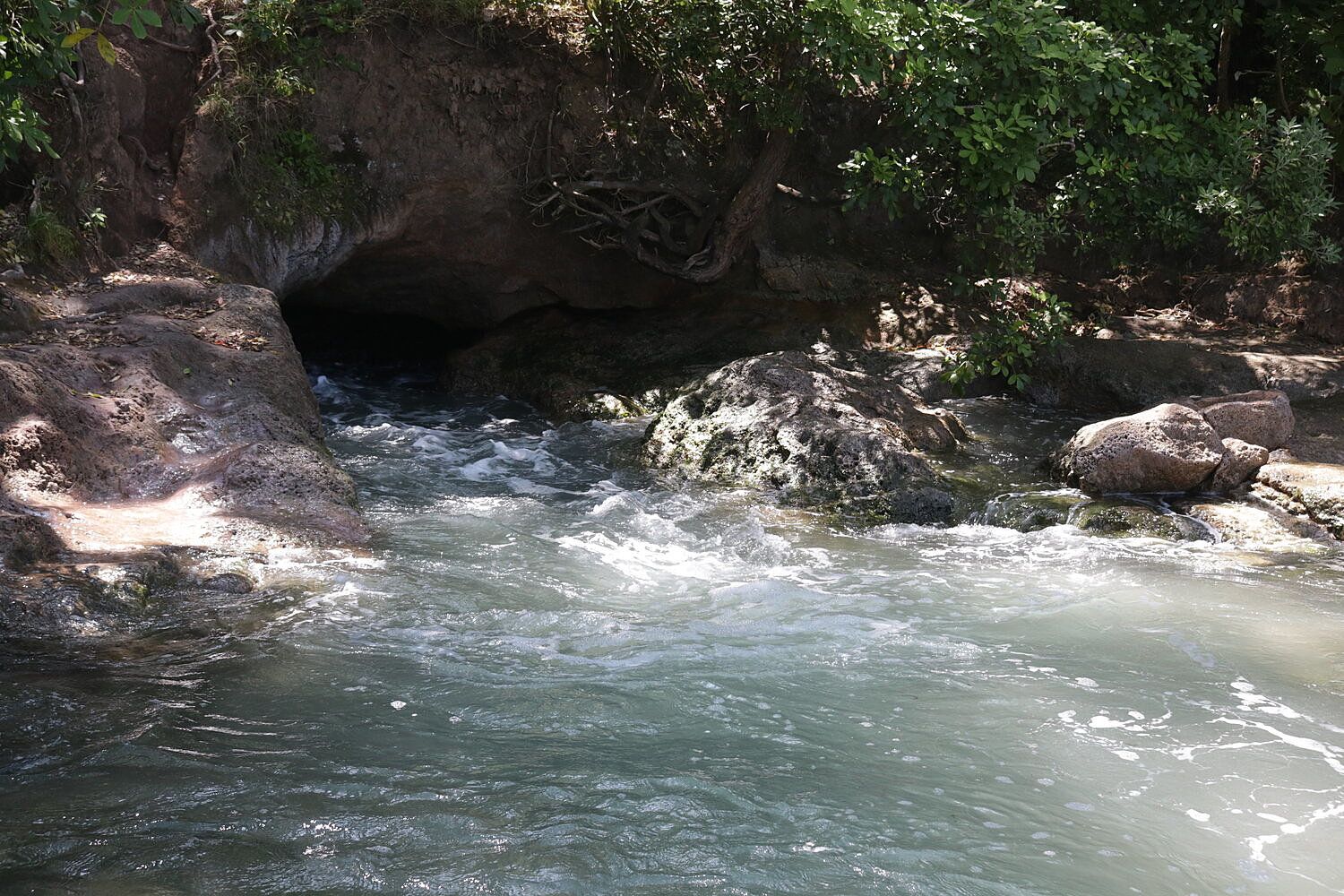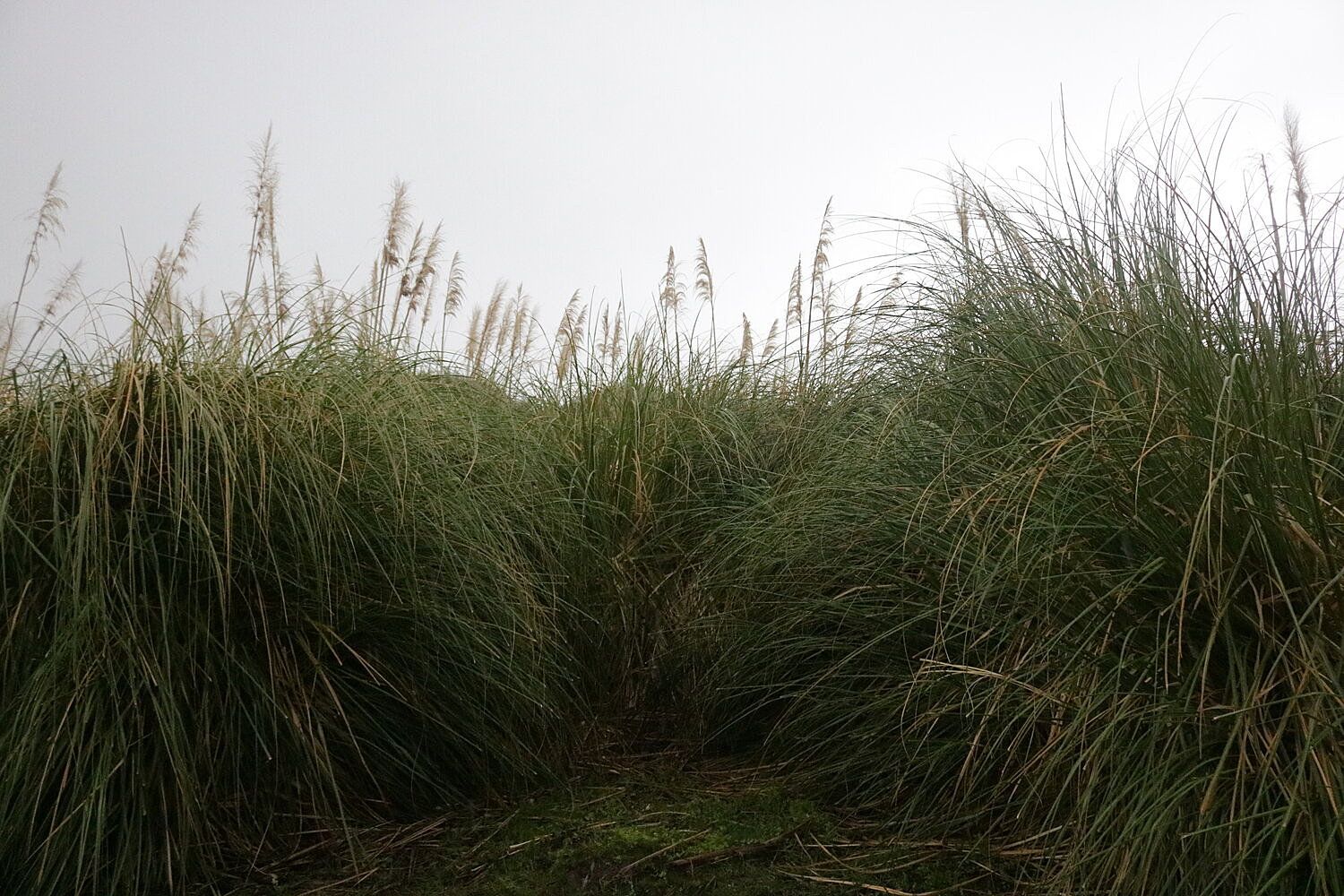Ngā Repo: Repositories of our Cultural History
Ashleigh Taupaki on wetlands as wāhi tapu for Māori who rely on them for food, rongoā and freshwater.
Whiritoa Estuary, Hauraki
2007
The first time I met my great-grandad was at Christmas with the side of my family that I see less and less as the years go by. He had a warm, brown and wrinkled face that made me feel like he knew me. I sat on a couch opposite his armchair as I ate gummy lollies and opened a can of Coca-Cola, watching him in awe amidst the commotion that was a living room full of sugar-fuelled kids and tipsy adults. He sat quietly as newly arrived family members came in to embrace him with cheek kisses and long hugs.
I saw my nana cry for the first time at his tangi. She wore a black skirt that I held on to for the week as I shadowed her every move. I didn’t know him like she did but I tried to carry her pain. We made flax flowers together and opened mussel shells with butter knives. We kissed his cold forehead and sang waiata while the men dug up rain-softened dirt at our hillside urupā.
I don’t remember the moment he was buried, but I remember the walk. I remember the cardboard beehive boxes and the hum of the rabble of bees. I remember the large plastic drums filled with rainwater at the gate. And I remember the heat from the uphill trek, the sweat the tāne had on their brows as they lifted the casket to the top, and the whispered kōrero of whānau catching up with whānau. The estuary below reflected the morning sun, rising to noon’s position as great-grandad was lowered into the ground.
The repo at Whiritoa consists of an estuary that is the product of seawater from te moana-nui-ā-toi mixing with the freshwater runoff from the hills that house the remains of my tīpuna. This intersection of wai reflects the social and spiritual intersections that occur and have occurred at this repo. I once read that freshwater acts as a catalyst that spirits use to travel from this realm to the next. In my mind’s eye, Whiritoa is such a place, and I imagine that this is the reason our urupā sits on the hill by the repo.
My whānau live on a block of land nearby. According to my nana, the land was secured by ancestors who came from Tauranga. Another account says an ancestor hopped out of their scouting waka along the Piako awa – amidst another rich and dense repo – to establish a settlement which became the iwi Ngāti Hako and expanded across the plains and coasts of Hauraki. Yet another account claims that Whiritoa is the landing and resting place of our waka and tīpuna after a long voyage across the sea.
Despite these chronicles of spiritual and physical migration, occupation, and manaakitanga, colonial influences on our whenua have convinced us that repo are a wasteland
*
Due to Ngāti Hako being the earliest known inhabitants of Hauraki, the origin stories are varied and numerous, but repo are evident in them all. This is because repo provided abundantly for the people. Manaakitanga – the active empowerment and uplifting of mana – is simulated in the functionality of repo. They are sources of freshwater and wetland fauna and flora, which contribute to the feeding of the people, rongoā Māori, the fulfilment of cultural customs, and hospitality purposes, which reflect mana.
Many Māori living in Hauraki built pā sites within the repo because the terrain acted as a natural defence and deterrent to invaders. In this sense, repo were providers and protectors. This is why it was, and still is, so important for tangata whenua to retain those connections to repo through sustained and reciprocal caregiving.
Despite these chronicles of spiritual and physical migration, occupation, and manaakitanga, colonial influences on our whenua have convinced us that repo are a wasteland, useless and unfit for settlement.1 Colonisers promoted the destruction of repo to prepare the whenua for development and commercial purposes by framing them as unhealthy, filthy and obstructive.
The nature of repo opposes the notion of inhabitable and picturesque European landscapes
This narrative was easily communicated and distributed with the help of the written word and print medium. Exploratory journals kept by our most infamous European founders – such as James Cook, Joseph Banks and Reverend William Smith – shared the sentiment that repo were nothing more than mud and yuck, further enforcing these ideologies.2,3 This coincided with the mindset of many European migrants, particularly those who were unable to own land or assets in their home country due to familial or financial standing.4
In this sense, Aotearoa was a place of opportunity to shape largely unaltered land for their own proprietary purposes. Western ideas of ownership and control over the whenua influenced the public perception of repo, framing them as obstructive to these motives. The nature of repo opposed the notion of inhabitable and picturesque European landscapes. Repo were deemed a ‘waste’ because, in the eyes of the colonists, they were of no monetary or individual use.
This has been evident in Whiritoa. Intensive sand mining carved out much of the whenua that framed the estuary; expansive agricultural development inland has caused fecal runoff to pollute the waters, and the subsequent loss of taonga species tangata whenua had once relied on to feed their communities. This colonial approach was the antithesis of the term ‘tangata whenua’ – rather than living within and with the whenua, the colonial view was to live above and over it; to deprive whenua of its livingness by prioritising individual gain over repo hauora.
Wider recognition of the mauri and voice of repo is vital in its revitalisation and restoration
*
This commentary is not meant to disregard or undermine the restorative mahi that is happening. We have kaitiaki taking care of repo, and the government has provided funding and guidance to restore and protect repo. However, the residue of the wasteland pretence remains within our public perception. There needs to be a reframing of the narrative, with these anecdotes, experiences, histories, memories and pūrākau of tangata whenua at the forefront.
Perhaps, as well as listening to the people, we should listen to the repo. It may not be as conventional and embedded in our national identity as swimming at the beach during summer or chasing waterfalls, but repo hold their own unique beauty, starting with the biodiversity that blooms at the intersection of varying environments. Wider recognition of the mauri and voice of repo is vital to incentivising its revitalisation and restoration.
Whiritoa Estuary, Hauraki
2019
It had been a long walk from the north to the south of the beach. The sand was soft under the sun and our bare fee – Aunty Lynnie, Nana and I. We had just come from Ramarama Stream, a popular place for kids to swim due to the shallow waters. We made our way to the blowhole that expels sea water into the estuarine lagoon ‘underlooking’ our family urupā. Knee-deep and footslogging through silty sand and water, my nana stopped near the edge of a deeper pool.
“Hello dad!” She shouted, waving her hand at the hilltop.
Water poured into the pool from the blowhole; a hole carved by the ocean’s push through the sandstone hill opposite the urupā. Coldwater mixed in with warm inland water, cooling our sand-burnt feet. Her greeting to her dad, my great-grandfather, reminded me of the beginning of a well-known Hauraki waiata:
“Karangahia ngā maunga o Hauraki / Call to the mountains of Hauraki”
This line always made me think about the power of the voice, and its seeming ability to move mountains and draw them nearer to oneself. I feel that in her voice now. She drew the water in with her karanga, letting the spirits of our ancestors know we were there.
It was a good day but a sad day. There was a sense of solemnity as Lynnie told me about the degrading and blackening mud in the estuary, a result of the farming and mining history uphill. The pikopiko no longer grew on the swampy margins, and there were no mahinga kai species to be found in the shallow pools.
However, this repo is still of significance. It is still the site we go to for tangihanga to say goodbye to our loved ones. It is still a lookout point overseeing the stretch of beach, and further to the endless stretch of Te Moananui-ā-Toi. It is still our eastern Whiritoa rerenga wairua, a leaping place for spirits on their journey to Hawaiki. I imagine the pool we stood in as the impetus leading spirits out to the sea through the water-carved, blowhole portal.
1 Alexander Douglas Young, “Wastelands ‘which might doubtless easily be drained’: A Contextual Study of the Drainage of the Hauraki Plains,” New Zealand Journal of Environmental Law 24 (2020): 247–278.
2 Joseph Banks, The Endeavour Journal of Joseph Banks, 1768–1771, https://gutenberg.net.au/ebooks05/0501141h.html
3 William Smith, Journal of a Voyage of the Missionary Ship Duff to the Pacific Ocean, 1796–1802 (New York: Collins and Co., 1813), https://www.canadiana.ca/view/oocihm.17670/6?r=0&s=1
4 James John Beattie, “Colonial Geographies of Settlement: Vegetation, Towns, Disease and Well-being in Aotearoa/New Zealand, 1830s–1930s,” Environment and History 14, no. 4 (November 2008): 583–610, https://www.environmentandsociety.org/mml/colonial-geographies-settlement-vegetation-towns-disease-and-well-being-aotearoanew-zealand
All images by Ashleigh Taupaki



